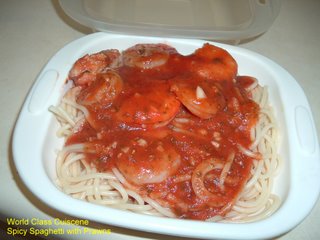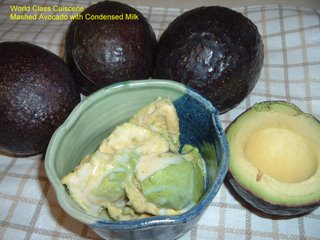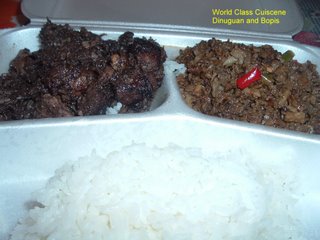Well, on this other part of the world, it's summertime. I don't intend to make our friends from down under jealous but that's how they will feel actually when I show them my coco juice and processed cantaloupe.
DYARAN......

The coconut juice is not that hard to make, that is if you have the gadget and the skill to open the coconut shell in such a way that there'd be at least a glass of the buko juice left. Also, granting that you were lucky in making sure that you chose just the right one, that is. The flesh could be mature and you're forced to just grate it for guinataan. Hey, that's another thought for something to have during summer.
Well, I am lucky in a different way. I chose a hubby who has the skill and the right tools to cut one up for me. In my hubby's hometown, buko is one of their main products. In front of their house are two "million-bearing" buko trees (???). Reachable ones. Everytime we go home, the folks make sure that they reserve the fruits for my children. My mother-in-law exactly knows when they are ready to be consumed.
I do have a problem with buko though. Because of its creaminess, sometimes my tummy acts up when I eat the flesh not cooked. They say the juice is a very good diuretic. I remember when I was suffering from a urinary tract infection when I was a kid. My mother had me drink tonnes and tonnes of this juice. I'd say it did help but it's best you consult your physician first if you're planning to have some because of UTI.
Anyway, aside from buko juice, I do enjoy grated cantaloupe with fresh milk and lotsa of ice in it. I don't put sugar in mine since the cantaloupe is already sweet. Others do however. I have yet to find this grater we use in the Philippines to make the cantaloupe flesh long but thin. For now, I just used the fork.
As for the buko, I just bought them from the Filipino store grated already. I just had to add milk in it.
Thanks JMom for hosting.
 Inspired by a spaghetti song..no, not the sphaghetti pababa at pataas but on "top of spaghetti", I cooked this recipe . While humming to the tune of the song, I merrily baked the meatballs out of these:
Inspired by a spaghetti song..no, not the sphaghetti pababa at pataas but on "top of spaghetti", I cooked this recipe . While humming to the tune of the song, I merrily baked the meatballs out of these: In a pan, put the cooked meatballs and add 1 250 ml tomato sauce. Add herbs if you want.
In a pan, put the cooked meatballs and add 1 250 ml tomato sauce. Add herbs if you want.



 We all know that Baguio is known for its luscious strawberries. I knew a man who owned a strawberry stall right in the heart of the city market. He would usually bring us day-old strawberries for us to eat. Well, we're from Baguio and we're not so much crazy about them unlike the "bakasyonistas" during Holy Week (when all produce prices go up sometimes twice or even thrice their normal--and watch me roll my eyes).
We all know that Baguio is known for its luscious strawberries. I knew a man who owned a strawberry stall right in the heart of the city market. He would usually bring us day-old strawberries for us to eat. Well, we're from Baguio and we're not so much crazy about them unlike the "bakasyonistas" during Holy Week (when all produce prices go up sometimes twice or even thrice their normal--and watch me roll my eyes).
